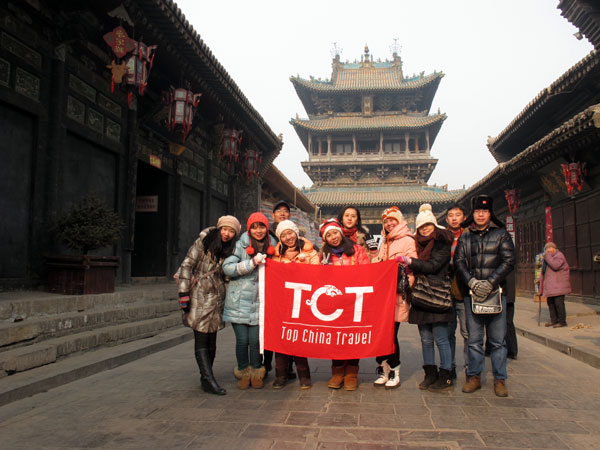Pingyao Ancient City is located in Pingyao County, central Shanxi Province, China. Since its listing as UNESCO World Heritage in 1997, Pingyao with its famous 600-year-old city wall a tourism product is selling well in China, thus becomes a hot destination of a never ending stream of busloads of tourist groups.
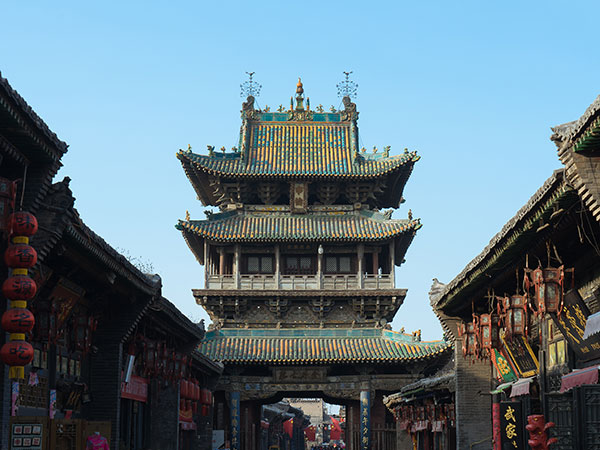
The ancient city of Pingyao had been emerged gradually along with the city wall during the Zhou Dynasty in 11th century - 256 BC. It is the only ancient city in China completely reserved as it was hundreds of years ago without any modern architecture, but only the narrow street flanking with Chinese shops in old style and the road plated with the original stone. Pingyao still retains its city layout from the Ming and Qing dynasties, conforming to a typical Ba Gua pattern.
Pingyao is not only famous for its antiquity, but also for being the merchant center with the nation’s earliest bank established in the 19th century, and furthermore it was once served as the financial center of the Qing government. Located on the trade route between
Beijing and
Xian in the ancient time, Pingyao developed into a merchant center where enterprising locals set up the nation's earliest banks. These institutions were the first in China to use checks, and business peaked in the 19th Century, when the city was the undisputed financial center of the Qing government. Several old courtyards have been turned into museums, most notably the homes and offices of Pingyao's old tongs, or banks. One of the most remarkable aspects of a visit here is realizing that this remote place was immensely important to China's financial history.
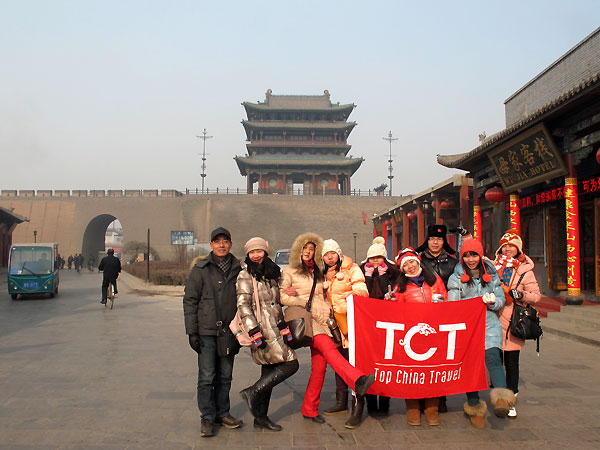
Brief History
Pingyao ancient started to be formed from BC 827 to BC 782 (during the reign of Emperor Xuan of Zhou Dynasty), by Yi Jipu who was a senior general in the Western Zhou Dynasty. They built the town when they garrisoned in the place. In the Spring and Autumn Period, the county belonged to the kingdom of Jin. It was part of the kingdom of Zhao in the Warring States period. In the Qin Dynasty, it was known as Pingtao County. During the Han Dynasty, it was changed its name to Zhongdu County and belonged to the capital of noble princes. And it got its name as Pingyao County in North Wei Dynasty. In the early period of Ming Dynasty, in order to defense against invasion of aliens, city wall was built. Since then, the city wall was restored and expanded for many time, and gate towers and fortresses were built as well. In 1703, when Emperor Kangxi traveled westwards and pass by Pingyao, he ordered to build four great gate tower (a tower over a city gate), to make the county more spectacular.
In 1986, the People's Republic of China designated Pingyao as one of the Chinese Historic and Cultural Cities. It became a World Heritage Site in 1997, including the outlying Zhenguo Temple and Shuanglin Temple. Since then, it becomes a physical specimens for the study of Chinese politics, economy, culture, art and religious development.
Main Attractions to See in Pingyao Ancient Town
The highlight of pingyao tour is, well, the city itself, its building complex including ancient walls, streets and lanes, shops, dwellings and temples, etc.. Its layout reflects perfectly the developments in architectural style and urban planning of the Han cities over more than five centuries. But most the buildings you can see now date back Ming (1368-1644) or Qing (1644-1911) Dynasties.
• County Government Office ''(Yamen)'' of Pingyao: Pingyao has been a county seat ever since the establishment of the prefecture-county system in the Qin dynasty, and the city has a well-preserved Yamen, or county government office, a complex building that houses the home and office of the magistrate sent to act as mayor, judge, and senior official. This Yamen consists of an archway, ceremonial gate, a residential area, various offices, a court, meeting rooms, a garden, and a prison. This Yamen compound was originally constructed in 1346 during the Yuan Dynasty, but only one building remains from the Yuan period, the rest having been built during the Ming Dynasty. There are altogether over 300 rooms in the complex.
 • Rishengchang Exchange Shop:
• Rishengchang Exchange Shop: it was founded in 1823 during the Qing dynasty, funded by rich businessman named Li Dakin in Xi Da Pu Village in Pingyao County, Shanxi Province, and co-founder Lei Lvtai. It was the pioneer of China's national banking sector, once operated the economic lifeline of the Qing dynasty throughout the nineteenth century. Its branches were distributed in more than 30 cities across the country, as well as far to Europe and America, Southeast Asia and other countries, becoming famous to the world known as "Land of Wealth" at the time.
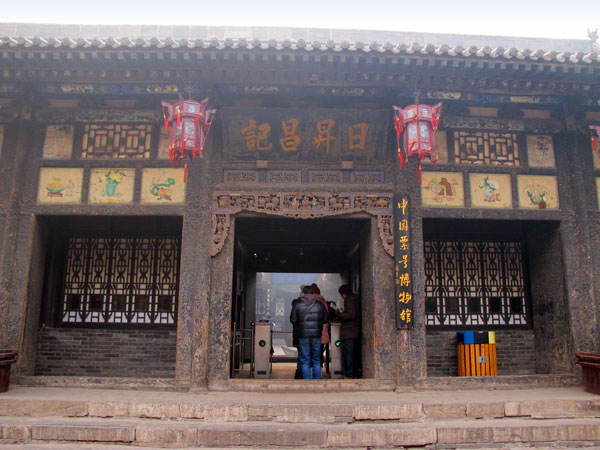 • Confucious Temple:
• Confucious Temple: it is located in the southeast corner, was built in the Tang Dynasty. It still remains what it was in the original time, being oldest Confucious Temple among the existing ones.
 • Shuanglin Temple:
• Shuanglin Temple: it is sited in the countryside of Qiaotou village about 6 to7 kilometers (3.7–4.3 mile) southwest of the ancient city of Pingyao. It is a large Buddhist temple in Shanxi Province and is inscribed as a UNESCO World Heritage site in 1997. With more than 2,000 existing painted sculptures made in the Ming and Qing dynasties, Shuanglin Temple has been reputed as an "oriental art gallery of painted sculptures".
 • City Walls:
• City Walls: Ancient City Wall is one of "Three Treasures" of Pingyao, the other two being Zhenguo Temple and Shuanglin Temple. This city wall enjoys the longest history compared with the others across China and remains almost intact. The walls measure about 12 meters high, with a perimeter of 6,000 meters. A 4-meter wide, 4-meter deep moat can be found just outside the walls. The walls have six barbican gates. The north and south sides have one gate each. The east and west sides have two gates each.
 • Ming-Qing Street:
• Ming-Qing Street: This street, named for the Ming and Qing Dynasties, has been the main commercial street in Pingyao for centuries. Hundreds of shops line this busy street, most of them built in the Ming and Qing Dynasties. It is home to many one-story courtyard houses compounds with rooms built around a series of courtyards and a lot of the main tourist sites. Today, many traditional-style shops line along the street, selling snacks, food, specialties, paintings, calligraphy, furniture, and souvenirs. Also on this street is the City Tower; with a height of 18.5 meters, it is the tallest structure in the city.
• Zhenguo Temple: it is a Buddhist temple located 10 km from Pingyao in the village of Hadongcun, in Shanxi Province, China. it has one of the oldest wooden building complex in China.
Travel Guide
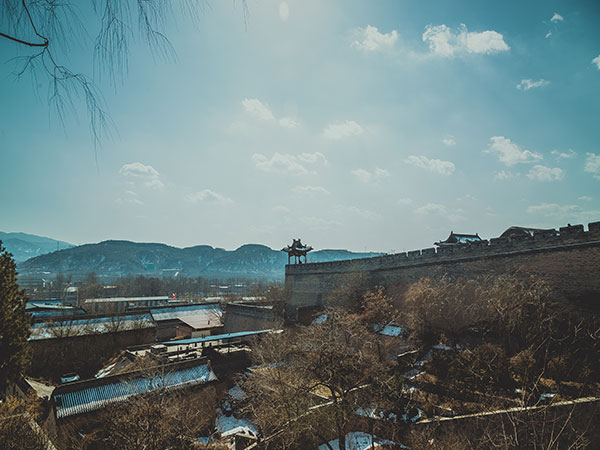 • Address:
• Address: Pingyao Ancient City, Pingyao County 031100, Shanxi Province, China
• Tel: 03545690000
• Opening hours: whole day
• How to get there: Pingyao do not have an airport; the nearest airport is Taiyuan Wu Su International Airport (TWIA). But it can be reached by trains or coaches. Some cities now have direct high-speed train to travel to Pingyao, such as Datong, Taiyuan, Beijing, Xian, etc. Very convenient.
Recommended China Tour to Pingyao: 11 Days North Ancient Towns Exploration Tour (Destination: Beijing-Datong-Pingyao-Xian-Shanghai)
 Ask a Question
Ask a Question







